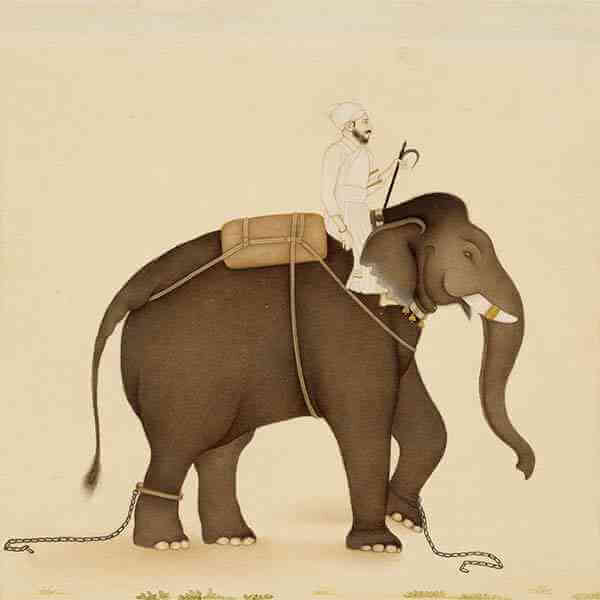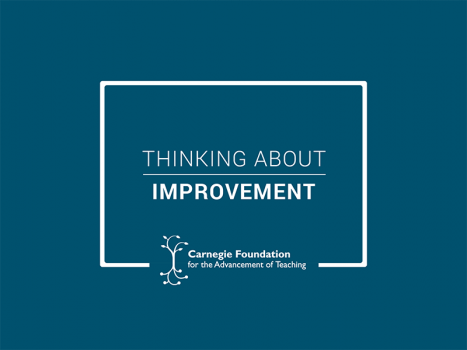Dan Heath, author of Switch: How to Change Things When Change is Hard, speaking at Carnegie’s Summit on Improvement in Education, acknowledged to those working toward positive change in education that a new approach might be in order. He said that instead of change being about interventions, as we usually approach it now, it is instead about the “long game” of changing direction through motivation.

Heath framed his talk around the compelling elephant-rider analogy—an explanation of the two (often at odds) sides of human nature—borrowed from University of Virginia psychologist Jonathan Haidt. The analogy suggests that everyone has two sides—a rider and an elephant. The rider represents the rational thinker, the analytical planner, the evidence-based decision-maker. The elephant, on the other hand, is an emotional player, full of energy, sympathy and loyalty, who stays put, backs away, or rears up based on feelings and instincts. The elephant is often on automatic pilot. It is the part of the brain that tells us to go ahead and eat the ice cream, after the rider has decided to put us on a diet.
Heath said, "Sparks come from emotion, not information.”
Although the rider holds the reins and appears to lead the elephant, the six-ton elephant can, at any time, overpower the rider and the rider, although he may not know this, can’t force the elephant to go anywhere unless he appeals to him and motivates him in some sustainable way. “In order to change the elephant, we have to appeal to a felt need,” Heath said. “Sparks come from emotion, not information.”
Nowhere is the elephant-rider dilemma clearer than in education reform. Policymakers are classic riders, pointing straight ahead and asserting all the while that “this is the right way, the clearest best path … I’ve got this beast under control.” Researchers, too, often act as riders, captivated by their carefully collected data and certain that their objective findings will prove compelling. Meanwhile, educational systems—slow, strong, passionate elephants that they are—plod along, sometimes responding to the switch of the rider and other times arching their backs in resistance. These elephants may try out a few different trails, lumber up a few small hills, but can buck that rider off at any point. After all, they’ve been living on this land for years. Riders come and go.
Don’t ignore the elephant, Heath urges us. The rider can’t just rely on a carefully charted, smartest, best path. He also must appeal to the elephant’s motivations. Good teachers understand this—they don’t get their students to read Shakespeare by telling them that it’s part of a canon that they need to know to be an educated person and be “college- and career-ready.” They show them Shakespeare is about love and hate and all of the raw emotional experiences they’re having in their own lives. And, he said, Carnegie understands this, citing our Productive Persistence interventions that reinforce a student’s sense of belonging as necessary to move the needle on student success in developmental mathematics.
The elephant also needs a well-directed rider, one who can see clearly beyond the trees and steer through the fog to what Heath calls “bright spots.” These spots are not the schools with 100 percent high achievers, but the places where small changes are making big differences. A good rider can lead an elephant to the bright spots since, as Heath explains, what looks like resistance is usually just a lack of clarity.
We need to get our riders and elephants in sync.
In the end, Heath leads us to a simple but important lesson for educational change: We need to get our riders and elephants in sync. That means finding smart, evidence-based paths to improve education, and finding those paths of least resistance. He again cited Carnegie’s efforts in developmental mathematics, noting instead of merely changing the course materials, Carnegie developed pathways that would get students through a college-credit math course in one year, instead of the current multi-year path where students often drop out between quarters or semesters.
“For change to succeed,” Heath concluded, “there are three ingredients. We need paths shaped for clear and easy passage. We need riders who know where to go and can see the bright spots. And, perhaps above all, we need enthusiastic elephants.”
March 17, 2014
A 90-Day Cycle conducted at the Carnegie Foundation explored the question of if teacher evaluation and teacher development efforts can and should be combined as aspects of a single system.
April 14, 2014
Carnegie addresses the challenge of teacher retention in its latest publication, Developing an Effective Feedback System, by presenting a feedback framework to help beginning teacher feel supported and engaged.






